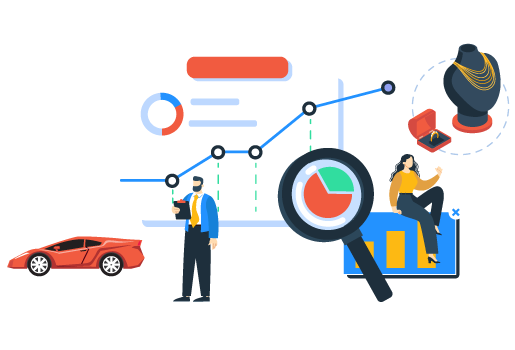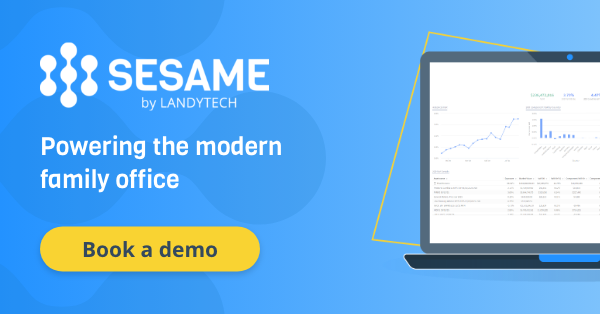Written by Landytech
6 Oct 2022As a family office, deepening relationships and growing the business is your lifeblood. In today’s fast-moving environment, a robust technological backbone is critical to success. Uncertainty in the financial markets is increasing attention on portfolio performance and placing greater emphasis on the service expectations of families. They want a rich flow of timely information at their fingertips and a consolidated picture of their net worth. As a result, many family offices are realising that their software requirements have increased, and that legacy technology is no longer capable of sustaining future portfolio management needs.
Nowhere is this need more prominent than with analytics and reporting. Family portfolios now span multiple asset classes, geographic markets and investment structures. And portfolio information is often spread across many third-party banks, custodians, administrators and private sources. Family offices need software that can keep up.
Any family office portfolio management platform should help you achieve operational efficiency, giving you more time for the high-touch interactions families value so highly.
What are family office portfolio management platforms?
These software solutions consolidate and enrich asset data in a single platform. Combining functionality in data management, portfolio analytics and consolidated reporting, these platforms provide a holistic view of wealth to inform investment decision making, manage risk and provide families with a superior reporting experience. With seamless integration with all your data sources feeding bespoke automated reporting, these platforms allow family offices to operate more efficiently and spend more time on value-add activities.
Why are family offices turning to technology?
Technology can help streamline every aspect of your family office. Accounting and record keeping. Portfolio management. Producing analytics and performance reporting. Fee management. Cash flow analysis. And more.
As the number of solutions continues to evolve rapidly, family offices can broadly choose from two options. Either opting for a ‘plug-and-play’ solution or choosing best-of-breed analytics and reporting software. Let’s take a closer look at the options, and the strengths and weaknesses of each approach.
What are the options?
A plug-and-play solution
On the face of it, plug-and-play solutions, also referred to as one-size-fits-all solutions, should provide family offices with the functionality they need for analytics and reporting. Unfortunately, many of the plug-and-play options for family offices have several disadvantages.
Every family is different, yet plug-and-play solutions lack the flexibility to customise views and reports based on differing end user requirements. For single family offices, that means they will struggle to provide the bespoke analytics and reporting families expect. For multi-family offices, it also means it’s only possible to grow with like-minded clients with similar portfolios.
Plug-and-play solutions aren’t usually designed for UHNW families. Handling complex ownership structures and sharing insightful analysis across entire portfolios is something these solutions struggle with. Families with heavily diversified portfolios will expect analytics and reporting to account for private equity, real estate and collectibles alongside their publicly listed assets.
A dedicated family office portfolio management platform
The main alternative is to opt for software that is built on an open platform, focusing on foundational competencies essential to your family office’s analytics and reporting workflows. It should also be able to integrate seamlessly with your other systems through APIs to extend its functional reach. And ideally, it should be supplemented by the provider’s consultative approach to help you create the optimal architecture for your family office. Here are the advantages of these platforms:
Open architecture
Software built on open architecture provides greater flexibility to tailor functionality to meet your specific needs. You’re able to rapidly deploy fully customisable views and reports for a diverse range of end users.
Take command of your data
Family office software should consolidate, standardise and enrich your data across banks, custodians and private assets, and bring it all together on one intuitive platform. Data should be easy to filter, link, analyse and export. It means that data can be sliced, sorted and filtered in multiple ways across different views and reports, leading to better-informed investment management decisions. Data should also take into account any complex family ownership structures, with the option to create on-the-fly groupings.
Link with other systems
Software should be able to integrate with your other systems through powerful APIs. If you already operate with other reporting and accounting systems, a platform built on open architecture can allow you to access this data and seamlessly feed it back into other internal systems to ensure you are operating from a single source of truth across the business.
Customisable consolidated reporting
Flexibility helps deliver a more personalised end user experience so you’re putting the right information in front of families in a format they’re familiar with, in near real time. You’ll have complete flexibility on the colour and branding of reports. Different generations may also prefer reports in different formats and will be interested in seeing varying combinations of metrics, all of which can be rapidly catered for.
Automate repetitive tasks
Streamlined workflows through automated data pipelines mean no more cumbersome copying and pasting in and out of spreadsheets, no more logging into multiple applications, and the end of simply ‘pushing’ reports to family members. Even if you’re not looking at your reporting platform, the relevant data held in it continuously feeds to wherever you need it.
Making the decision
For family offices to grow and deliver a better overall experience, they need software that provides both complete analytical and reporting customisability, and a single platform for accurate, actionable portfolio data.
While a plug-and-play solution may provide an integrated range of functionality, its rigidity can hamper family offices’ ability to respond quickly to changing analytical and reporting requirements, posing the real risk of time-consuming manual workarounds developing over time, contributing to operational inefficiency and key-person risk.
Flexible software built on open architecture can provide you with best-in-class technology that makes it easier to adapt and scale as your needs evolve. There’s a philosophical difference between plug-and-play and open solutions. The decision often comes down to whether to service your current state or adopt software that will be the technological backbone you need long into the future.
Related Content

The Top 10 Family Office Trends in 2024
To say the current economic environment is complex would be an understatement. With interest rates high and structural economic headwinds persisting, many economists believe we are in a “rolling recession” — a slow-growth period with industries...

How your family office should be sourcing wealth data
As today’s UHNW become more geographically dispersed and family officesbecome more sophisticated in their investment functions and allocation strategies,portfoliosnowconsist of multiple asset classes, custodians and currencies, and investments...
-1.jpg)
5 ways to improve productivity in your family office
As family offices attempt to modernise, many are facing productivity challenges due to out-of-date, disparate internal systems andheavily manual processes. Naturally, there are inherent risks associated with such inefficiencies, including missed ...




